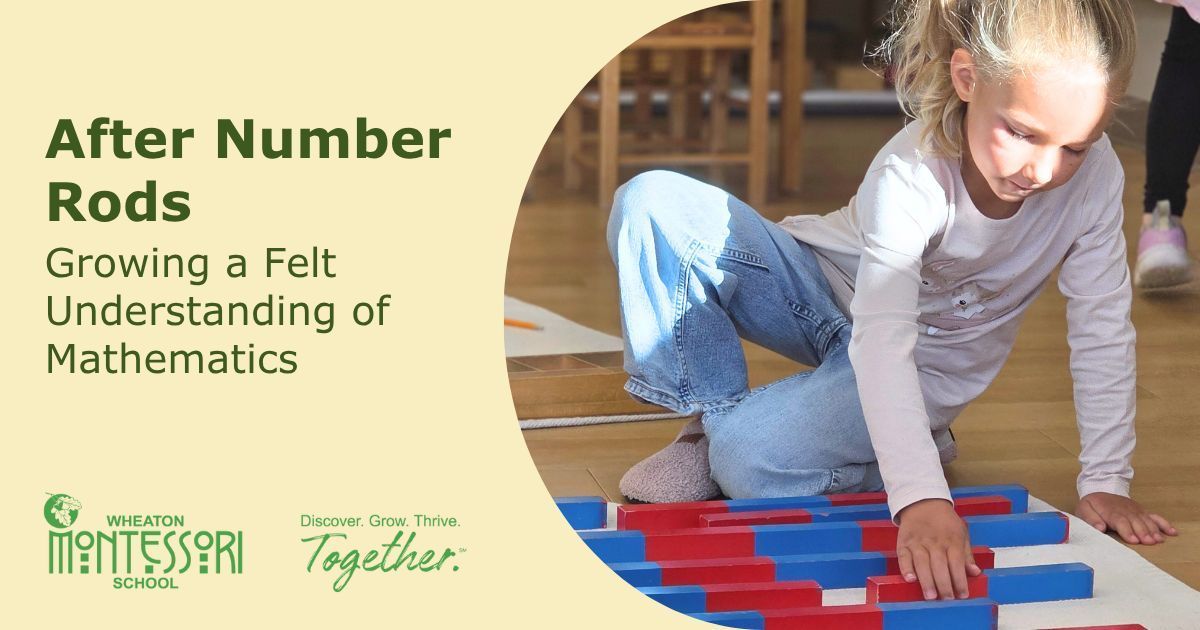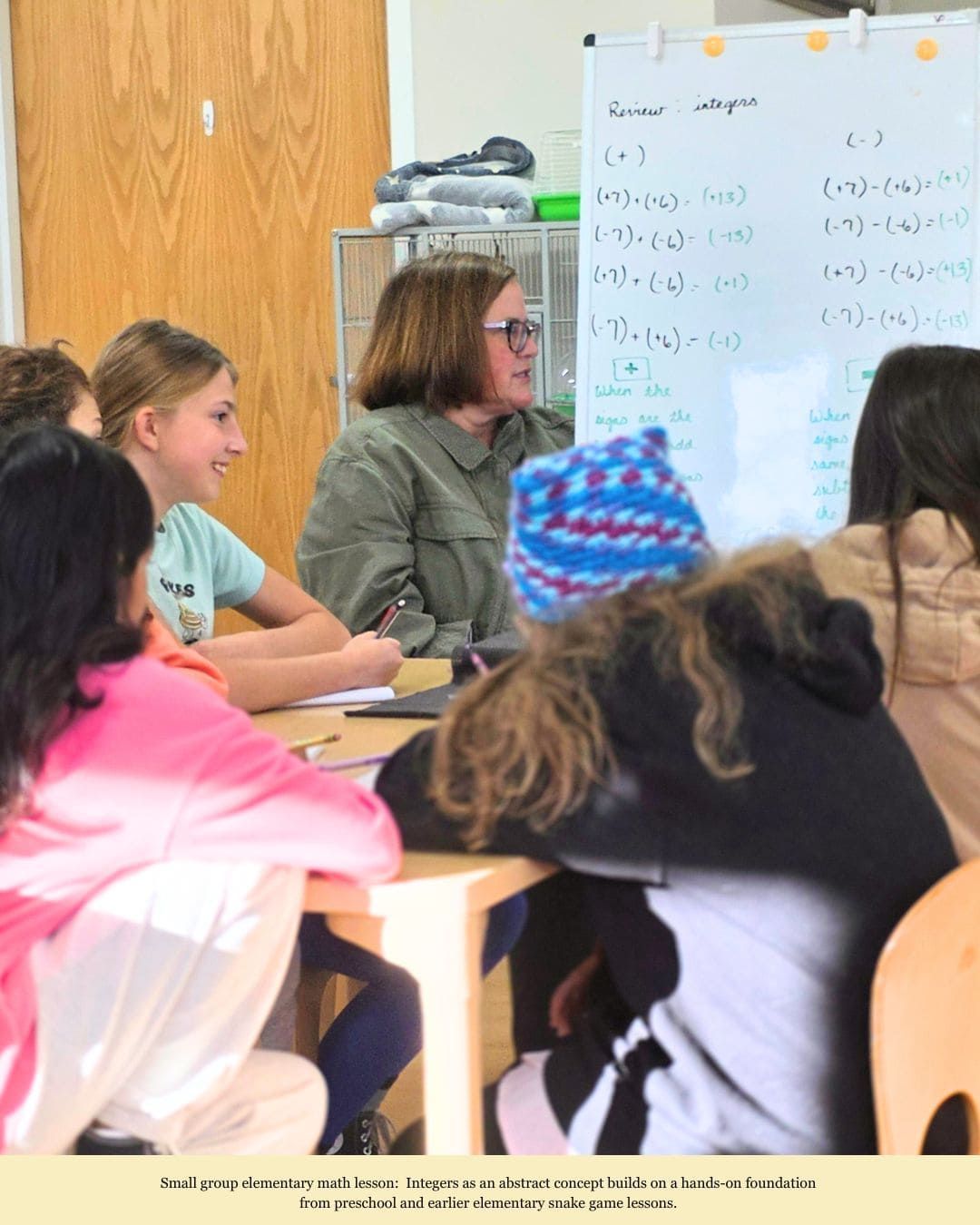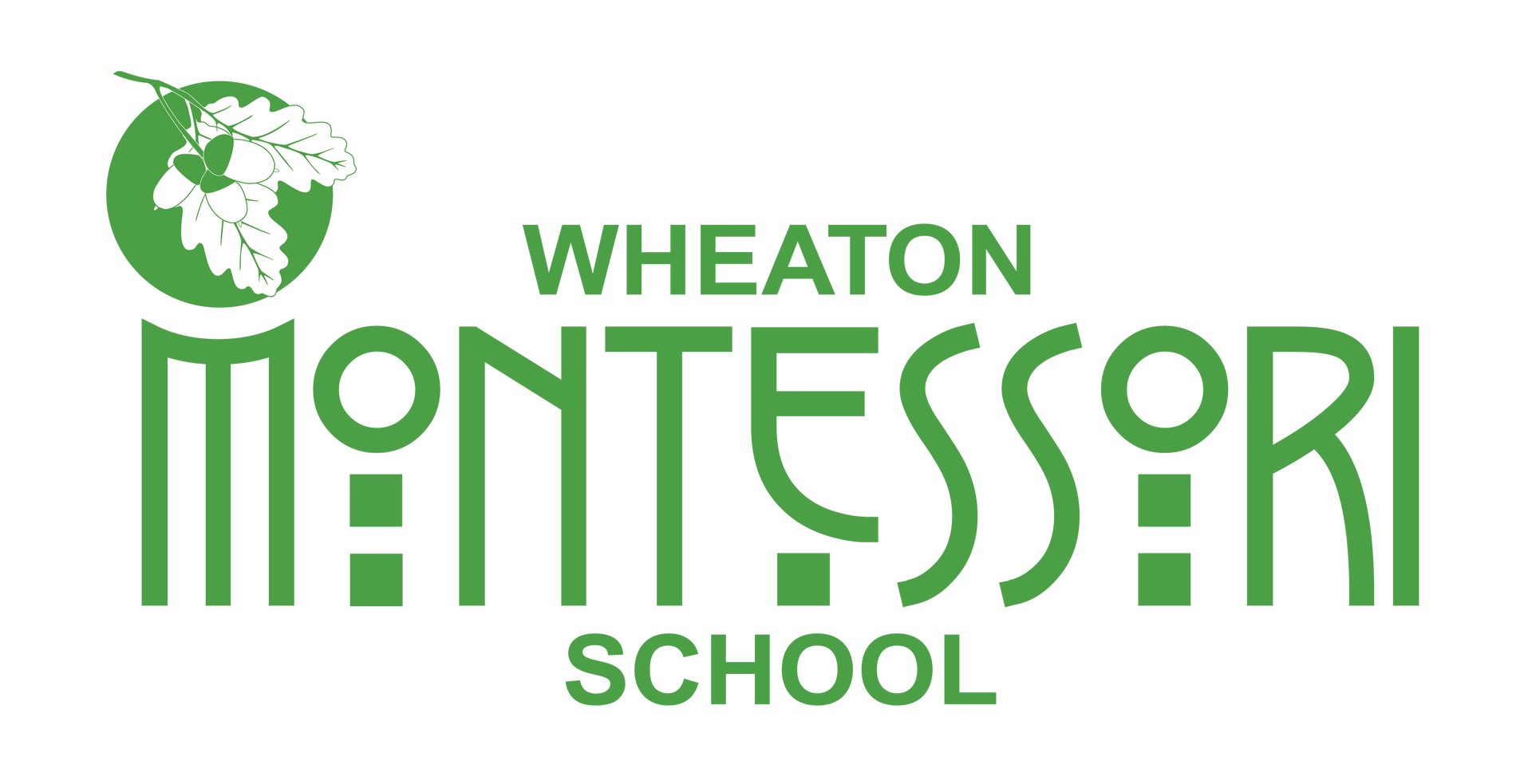
In Montessori classrooms, mathematical understanding begins long before symbols or equations appear. It begins in the body.
When young children carry Number Rods—red and blue wooden bars of increasing length—they are not merely learning to count. They are internalizing what quantity feels like. The rods show quantities in a fixed, linear, and measurable form—not loose, individual, or separate units. This difference is subtle but powerful.
In many conventional early math settings, children are shown three buttons or four apples and asked, “How many?” Montessori children certainly have those experiences too, through materials like Cards and Counters. But the Number Rods introduce something more abstract: quantity as something continuous and measurable. A rod of six is one solid piece, not six separate ones. It represents a fixed magnitude that can be compared, combined, or measured—laying the foundation for the number line, for operations, and for the idea that numbers express magnitude as well as count.
“This concept can be compared to an eight-ounce glass of water: you don’t have eight separate ounces, you have a glass that is eight ounces. It’s a whole quantity, not a sum of parts. Likewise, the Number Rods offer children an experience of number as a unified magnitude. The “six” rod is not three twos or two threes; it is simply six. That understanding, that a number can be both composed and whole, bridges a crucial conceptual gap for
later mathematics.”
Kelly Jonelis, Adolescent Program Director and Math Teacher
Through countless experiences—carrying, comparing, building stair patterns, and making “ten combinations”—children begin to feel relationships between numbers. They see that five is longer than three by exactly two, and that these relationships are consistent and reliable. This concrete sense of equivalence and proportion quietly becomes the basis of estimation, measurement, and algebraic thinking.
Even extensions like “memory games” or exploring one meter in length serve a larger purpose. The child’s repeated interactions with fixed quantities help them internalize what Montessori called “materialized abstraction.” They are learning, through movement and perception, what it means for a quantity to exist in space and time—a step far deeper than counting individual items.

Years later, this foundation reveals itself in subtle but remarkable ways. In upper elementary and adolescent math seminars, students often complete a complex word problem and pause. “That doesn’t make sense,” they’ll say. “It feels too small.” Or, “It seems too big.”
"In our adolescent math seminars, students often know immediately if an answer ‘feels’ right or too large or too small. This intuition doesn’t come from memorizing formulas; it comes from the foundation they built in Primary classrooms with Number Rods. Those early, hands-on experiences give them a deep, embodied understanding of quantity and relationships that carries into complex algebra and beyond."
Kelly Jonelis, Adolescent Program Director and Math Teacher
That instinct—rooted not in procedure but in perception—is evidence of true number sense. In conventional settings, estimation is often procedural: rounding, approximating, or following a rule to get “close enough.” But Montessori learners check their work differently. They draw on intuition built through years of embodied experience with quantity. They know, deep down, what “enough” feels like—what scale is sensible, what a number means beyond its digits.
Montessori education invites this natural progression: from physical to abstract, from measurable to conceptual, from the rods of early childhood to the algebraic reasoning of adolescence. Along the way, children don’t just learn to do math—they learn to feel it, to trust it, and to see the patterns that underlie it.
The journey from Number Rods to number sense is, in essence, the child’s journey from touch to thought—an elegant unfolding of mathematical understanding that begins, quite simply, with holding “one.”


